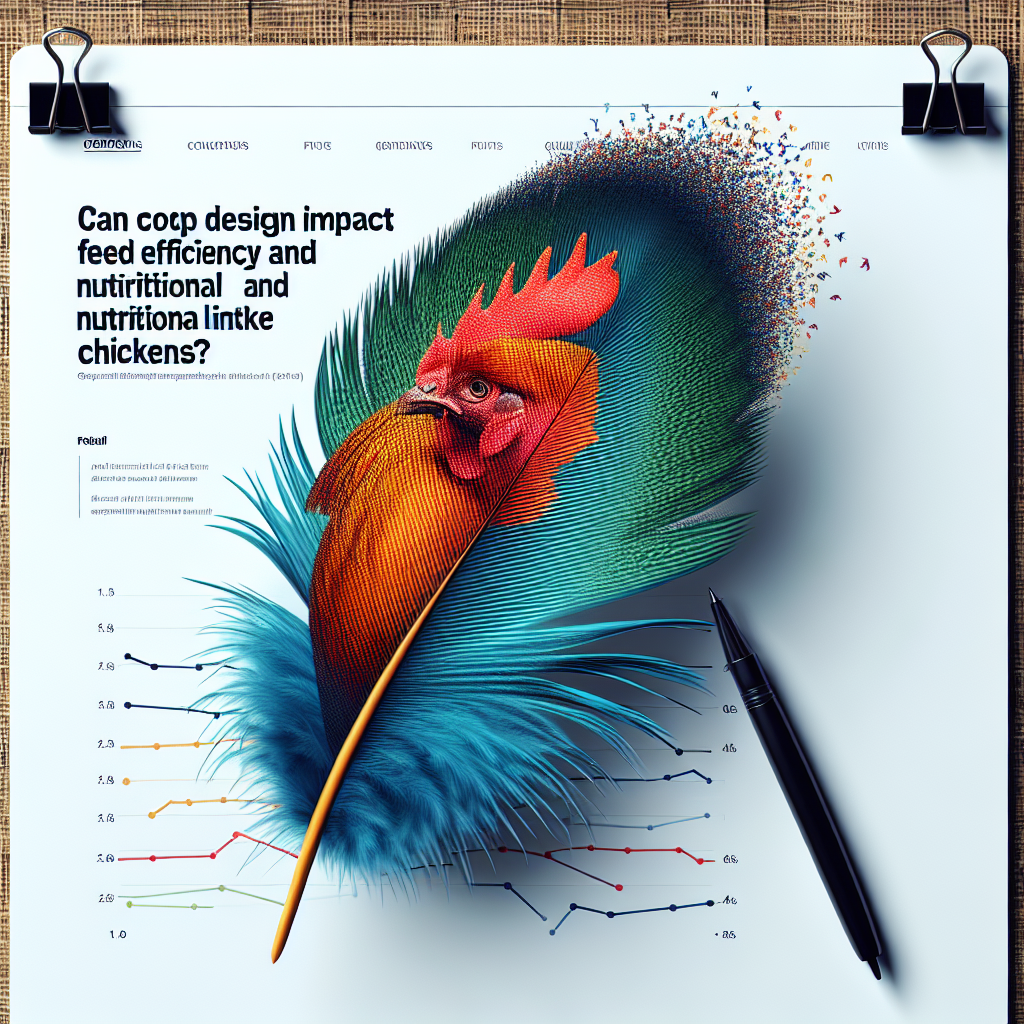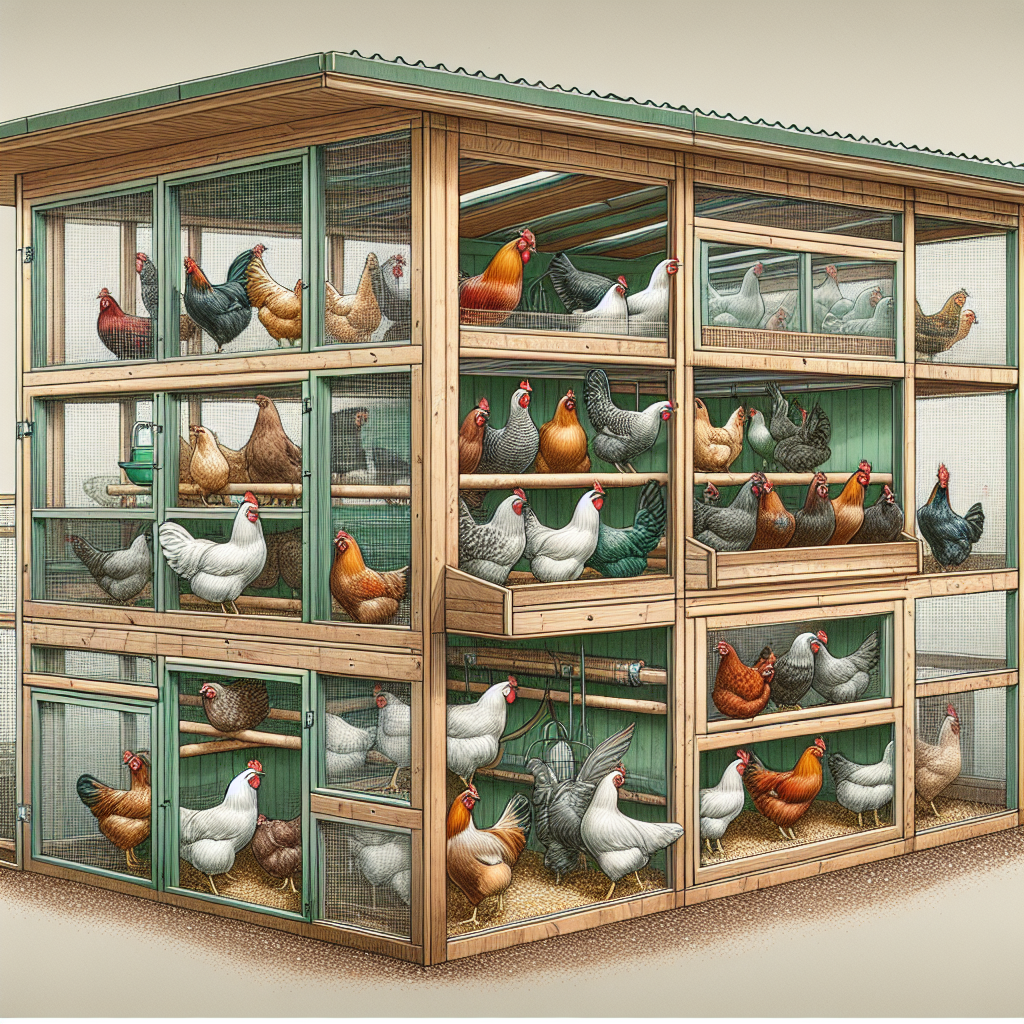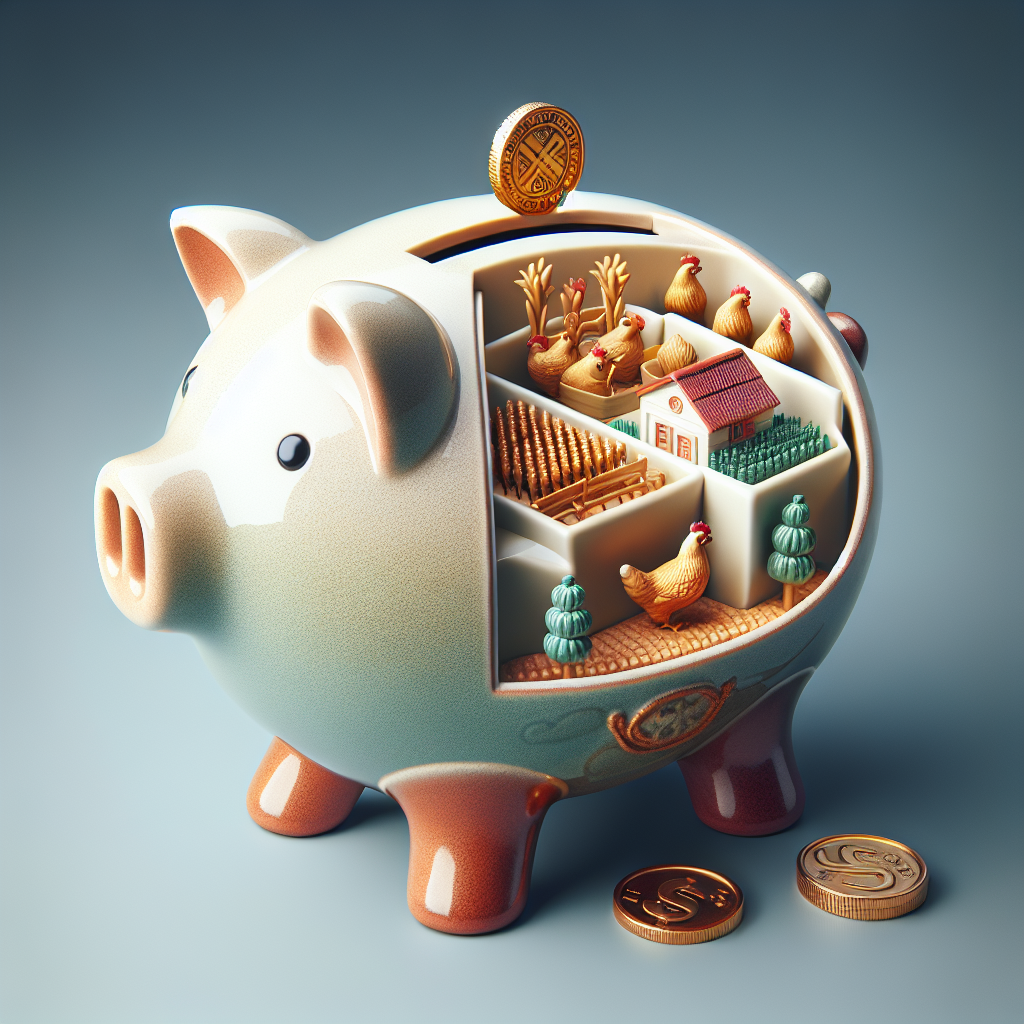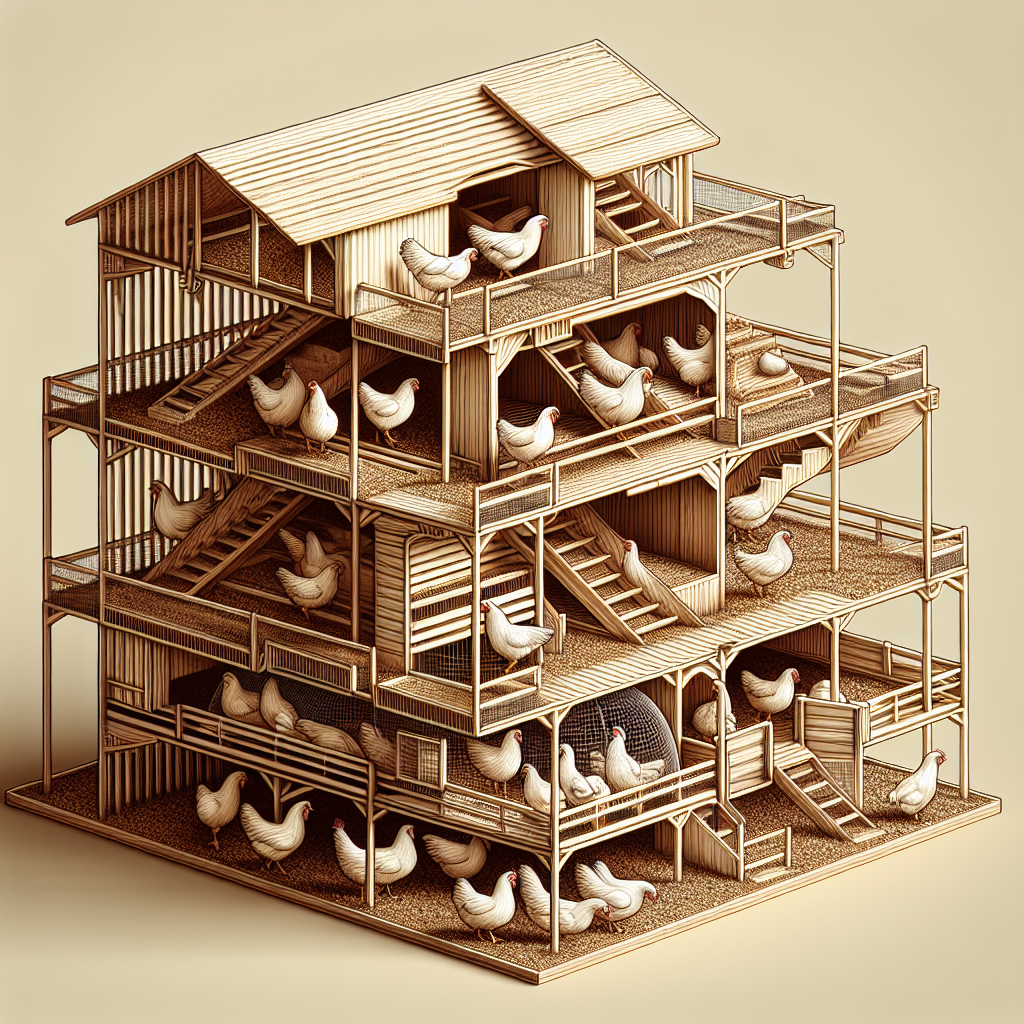Imagine having a cozy home that not only provides comfort but also helps you eat better and be more efficient – well, it turns out chickens might just have found the secret to such a perfect setup. In this article, we explore the fascinating relationship between coop design and its impact on feed efficiency and nutritional intake for chickens. You’ll be amazed to discover how the right design can enhance their well-being and even lead to healthier, happier chickens. So, grab a cup of tea, sit back, and let’s explore the world of coop design and its remarkable effect on our feathered friends.
Coop Design and Its Impact on Feed Efficiency and Nutritional Intake for Chickens
Can coop design impact feed efficiency and nutritional intake for chickens? The answer is a resounding yes! The design of a chicken coop plays a crucial role in determining the overall health and well-being of the birds, including their feed efficiency and nutritional intake. Several factors come into play when considering coop design, all of which contribute to creating an optimal environment for your chickens.
Factors Affecting Feed Efficiency and Nutritional Intake
Before delving into the importance of coop design, it is essential to understand the factors that affect feed efficiency and nutritional intake for chickens. Proper nutrition is crucial for the growth, development, and overall health of the birds. Factors such as coop size, ventilation, lighting, accessibility to feed and water, roosting and nesting areas, pest and predator prevention, behavioral enrichment, cleaning and maintenance, coop layout, and placement all impact their feed efficiency and nutritional intake.
Importance of Coop Design
The design of a chicken coop plays a significant role in ensuring the optimal health and well-being of the birds. A well-designed coop provides a conducive environment that allows chickens to thrive, leading to improved feed efficiency and nutritional intake. Let’s explore the various aspects of coop design that contribute to achieving these goals.
1. Size and Space
The size and space of a chicken coop are critical considerations when aiming for maximum feed efficiency and nutritional intake. Crowded conditions can lead to stress, reduced mobility, and increased competition for resources, negatively impacting the overall health of the birds. Providing sufficient space allows them to move freely, exhibit natural behaviors, and access feed and water sources easily.
1.1 Optimal Coop Size
An optimal coop size is essential to accommodate the number of chickens you intend to keep. A general guideline is to allow at least 4 square feet of coop space per chicken. This ensures that each bird has enough room to move around comfortably and reduces the risk of overcrowding.
1.2 Providing Sufficient Space for Roaming
In addition to the coop’s size, it is crucial to provide outdoor space for chickens to roam and forage. A spacious and secure outdoor area allows the birds to engage in natural behaviors, such as scratching for insects and pecking at grass. This not only provides them with additional nutrition but also keeps them active and psychologically stimulated.
2. Ventilation and Air Quality
Proper ventilation and air quality are vital for maintaining the health of chickens and optimizing their feed efficiency. Ventilation helps remove excess moisture, ammonia, and other harmful gases from the coop, ensuring fresh, clean air for the birds to breathe.
2.1 Proper Ventilation for Healthy Chickens
A well-ventilated coop promotes airflow, preventing the accumulation of moisture and gases that can contribute to respiratory issues for the chickens. Installing windows, vents, or fans can greatly enhance ventilation. Proper airflow helps remove stale air, dust, and pathogens, creating a healthier environment for the birds.
2.2 Reducing Ammonia Levels
Ammonia is a harmful gas that can build up in poorly ventilated coops. It can cause respiratory distress and other health issues for chickens. Adequate ventilation helps reduce ammonia levels, ensuring that the birds have clean air to breathe. Regularly cleaning the coop and providing adequate airflow are essential for maintaining optimal air quality and reducing ammonia levels.
3. Lighting and Temperature Control
Proper lighting and temperature control are essential aspects of coop design that influence feed efficiency and nutritional intake for chickens. Light and temperature play significant roles in the birds’ daily routines and overall health.
3.1 Proper Lighting for Enhanced Feed Intake
Proper lighting is crucial for stimulating the chickens’ appetite and encouraging healthy feed intake. Natural light provides essential cues for the birds’ internal clock, helping them to establish regular eating patterns. Incorporating windows or skylights into the coop design allows for exposure to natural daylight, positively impacting their feed consumption.
3.2 Maintaining Optimal Temperature
Maintaining a consistent and optimal temperature is essential for the well-being of the chickens. Extreme temperatures can stress the birds, resulting in reduced feed intake. Insulating the coop and providing adequate ventilation help regulate the temperature inside, ensuring a comfortable environment for the chickens year-round.
4. Feed and Water Accessibility
To promote feed efficiency and maximize nutritional intake, it is crucial to provide easy access to feed and water sources within the coop. Chickens should be able to reach their food and water without any obstacles or risk of contamination.
4.1 Easy Access to Feed and Water Sources
Placing feeders and waterers at a suitable height and within proximity to the chickens’ roosting and nesting areas promotes easy access. This ensures that the birds can feed and drink whenever they need, leading to consistent and adequate nutritional intake.
4.2 Preventing Feed Contamination
Keeping feed clean and free from contamination is paramount. Avoid placing feeders near areas where droppings may accumulate or pests may access. Regularly cleaning and maintaining feeders and waterers, as well as providing adequate storage for feed, can help prevent contamination and ensure the birds receive uncontaminated and nutritious food.
5. Roosting and Nesting Areas
Creating comfortable and safe roosting and nesting areas is essential for ensuring the well-being of the chickens and maximizing their feed efficiency.
5.1 Comfortable Roosting Spots
Chickens naturally seek elevated places to sleep, so providing suitable roosting spots is essential. Designing roosting bars that allow sufficient space for each bird and are comfortable for them to perch on will ensure they rest properly, promoting their overall health and well-being.
5.2 Safe and Clean Nesting Areas
Hens require quiet, safe, and clean areas to lay their eggs. Designing appropriate nesting boxes that are well-ventilated, private, and easily accessible will ensure that the hens feel secure and encouraged to lay eggs. A clean nesting area reduces the risk of contamination and promotes healthier chicks.
6. Pest and Predator Prevention
Protecting chickens from external threats plays a significant role in their overall well-being and feed efficiency. Coop design should incorporate measures to minimize the risk of pests and predators harming the birds.
6.1 Protection Against External Threats
Ensuring the coop is secure by using sturdy materials, reinforcing doors and windows, and installing predator-proof fencing can help deter predators such as raccoons, foxes, and rodents. Regularly inspecting and patching any openings or weak areas will keep the chickens safe.
6.2 Minimizing Stress to Boost Nutritional Intake
Pests and predators can induce stress in chickens, leading to reduced feed intake and overall poor health. By minimizing the presence of these threats through proper coop design and maintenance, chickens can feel safe and secure, leading to enhanced feed efficiency and nutritional intake.
7. Behavioral Enrichment and Exercise Opportunities
Allowing chickens to engage in natural behaviors and providing opportunities for exercise can positively impact their feed efficiency and nutritional intake.
7.1 Encouraging Natural Behaviors
A well-designed coop should incorporate elements that allow chickens to engage in natural behaviors such as scratching, dust bathing, and pecking. Providing materials like logs, straw, or dust bathing areas stimulates their natural instincts and behavior, leading to a healthier and more active flock.
7.2 Promoting Exercise for Increased Appetite
Regular exercise promotes better appetite and overall well-being in chickens. Designing the coop to allow for easy movement and incorporating perches, ramps, or platforms can encourage physical activity. An active flock tends to have healthier feed intake and improved feed efficiency.
8. Ease of Cleaning and Maintenance
Maintaining cleanliness in the coop is crucial for the chickens’ health and well-being. Coop design should prioritize ease of cleaning and efficient manure management to prevent the spread of diseases and promote clean living conditions.
8.1 Preventing Disease and Promoting Cleanliness
A well-designed coop should include features such as easy-to-clean flooring, removable nest boxes, and roosting bars, and access doors that facilitate cleaning. Proper waste management, such as regularly removing droppings, ensures a clean environment that reduces the risk of disease transmission and promotes healthier chickens.
8.2 Efficient Manure Management
Proper manure management is not only essential for coop cleanliness but also for reducing odor and preventing the accumulation of harmful bacteria. Designing the coop with options for efficient manure collection, such as removable trays or a well-designed drainage system, simplifies the cleaning process and contributes to optimal feed efficiency and nutritional intake.
9. Coop Layout and Organization
The layout and organization of a chicken coop impact the ease of navigation, access to resources, and overall functionality of the space.
9.1 Ensuring Easy Navigation
A well-designed coop layout considers the natural movement patterns of chickens. Ensuring there are no unnecessary obstacles or tight spaces allows the birds to move freely within the coop, making it easier for them to access feed, water, roosting areas, and nesting boxes.
9.2 Effective Space Utilization
Optimizing space utilization in the coop is vital for accommodating the number of chickens you plan to keep and providing them with ample space to move and perform natural behaviors. Strategic placement of feeders, waterers, roosting areas, and nesting boxes allows for efficient use of space while creating a comfortable environment for the birds.
10. Location and Integration with the Environment
Considering the coop’s location and integrating it with the surrounding environment can contribute to the chickens’ overall well-being and feed efficiency.
10.1 Consideration of Sunlight and Shade
Choosing an appropriate location for the coop that provides a balance of sunlight and shade is crucial. Ensuring that the coop is not in direct sunlight throughout the day prevents overheating, while allowing for exposure to natural light promotes the chickens’ natural behaviors and overall health.
10.2 Cohesiveness with Surrounding Environment
Integrating the coop with its surrounding environment can provide benefits such as natural foraging opportunities and protection from wind and extreme weather conditions. Ensuring that the coop’s design complements the landscape and considering factors such as wind direction and natural barriers can contribute to a more harmonious environment for the chickens.
In conclusion, coop design significantly impacts feed efficiency and nutritional intake for chickens. Considering factors such as size and space, ventilation and air quality, lighting and temperature control, feed and water accessibility, roosting and nesting areas, pest and predator prevention, behavioral enrichment and exercise opportunities, ease of cleaning and maintenance, coop layout and organization, and location and integration with the environment are crucial in creating an optimal coop environment. By prioritizing these aspects in your coop design, you can provide a healthy and thriving environment for your chickens, leading to improved feed efficiency and nutritional intake.




